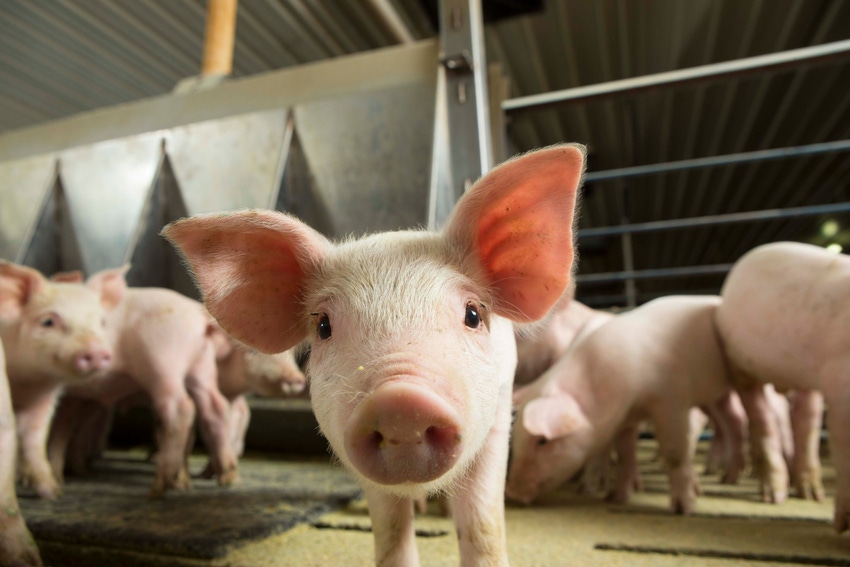Maintaining continuity of nutrient intake after weaning
Wean pig care must focus on maintaining continuity of nutrient intake to reduce morbidity and mortality after weaning.
May 13, 2021

In modern swine production, weaning often occurs during a critical window of gut maturation. Excessive immune stimuli in response to weaning stressors in combination with low feed intake can lead to reduced growth. As an industry, it is important that we understand the factors involved in the regulation of stress homeostasis and consequently feed intake in order to reduce fall out rates. Research has demonstrated that different post-weaning strategies can be implemented on farm to improve feed intake and reduce morbidity and mortality after weaning.
Environmental: Providing weanling pigs with an environment that encourages them to search out and consume feed is important. This includes appropriate barn temperatures, easy access to feed and nursery placement strategies. It is essential that caretakers in the barn know how to read pig behavior so that they can make the necessary adjustments to maintain an adequate thermal environment. Likewise, mat and gruel feeding are commonly practiced throughout the industry to increase feed accessibility. While limited research data is available to validate protocols or benefits, mat feeding has been shown to reduce removal rates after weaning.
Other factors that influence feed availability include, pen size, group size, feeder design, and location of feeder relative to water. Similarly, nursery placement strategies play a role in initial feed intake. Sorting light weight pigs into uniform body weight groups and average or heavy weight pigs into variable body weight groups increases initial feed intake, providing the greatest benefit to light pigs while also reducing initial aggression in heavy pigs.
Water consumption and enrichment: Water intake tends to be greatest in the first 24 hours after nursery placement. Therefore, water enrichment strategies can be used to provide additional nutrients at weaning. Water enrichment with electrolytes, plasma globulins and others has been shown to improve growth performance and reduce morbidity and mortality in the early post-weaning period.
Diet considerations: There are a multitude of diet considerations important for the weanling pig. Specifically, young pigs are sensitive to palatability which is influenced by odor, taste, and texture. Therefore, when formulating diets for newly weaned pigs, feed ingredients and diet form should be taken into account.
Feeding more complex diets with high levels of lactose, animal protein products, and other palatable ingredients during the first week post-weaning improves pig growth and efficiency, with the greatest response observed in the lightweight pig population. These initial benefits tend to decrease with increasing time post-weaning. Furthermore, pelleted diets are known to increase feed efficiency and nutrient digestibility compared to meal diets. However, regardless if fed as a meal or pellet, weanling pigs prefer diets manufactured with coarse (700 microns) ground corn rather than fine ground corn.
When pelleted diets are fed, young pigs prefer pellets with a larger diameter. It is important to note that increased preference does not always equate to higher feed intake, especially when pigs are not given a choice between diets. Likewise, liquid feeding strategies have been shown to offer additional opportunities to increase dry matter intake in the immediate post-weaning period, particularly in lightweight pigs. The implications on death loss and culling rates need to be considered though because it is not well understood that if offering liquid feed immediately after weaning requires a second weaning when pigs are transitioned from a liquid diet to solid feed.
In summary, wean pig care must focus on maintaining continuity of nutrient intake to reduce morbidity and mortality after weaning. Many of the strategies presented in this article provide opportunities for producers to encourage interaction with the feeder, prevent feed neophobia and reduce stress around the time of weaning.
For more information, we would direct you to a video on the Improving Pig Survivability website and paper on the subject.
Source: Madie Wensley, Mike Tokach, Jason Woodworth, Robert Goodband, Jordan Gebhardt, Joel DeRouchey, Denny McKilligan, Kansas State University, TechMix Inc., who is solely responsible for the information provided, and wholly owns the information. Informa Business Media and all its subsidiaries are not responsible for any of the content contained in this information asset. The opinions of this writer are not necessarily those of Farm Progress/Informa.
You May Also Like



